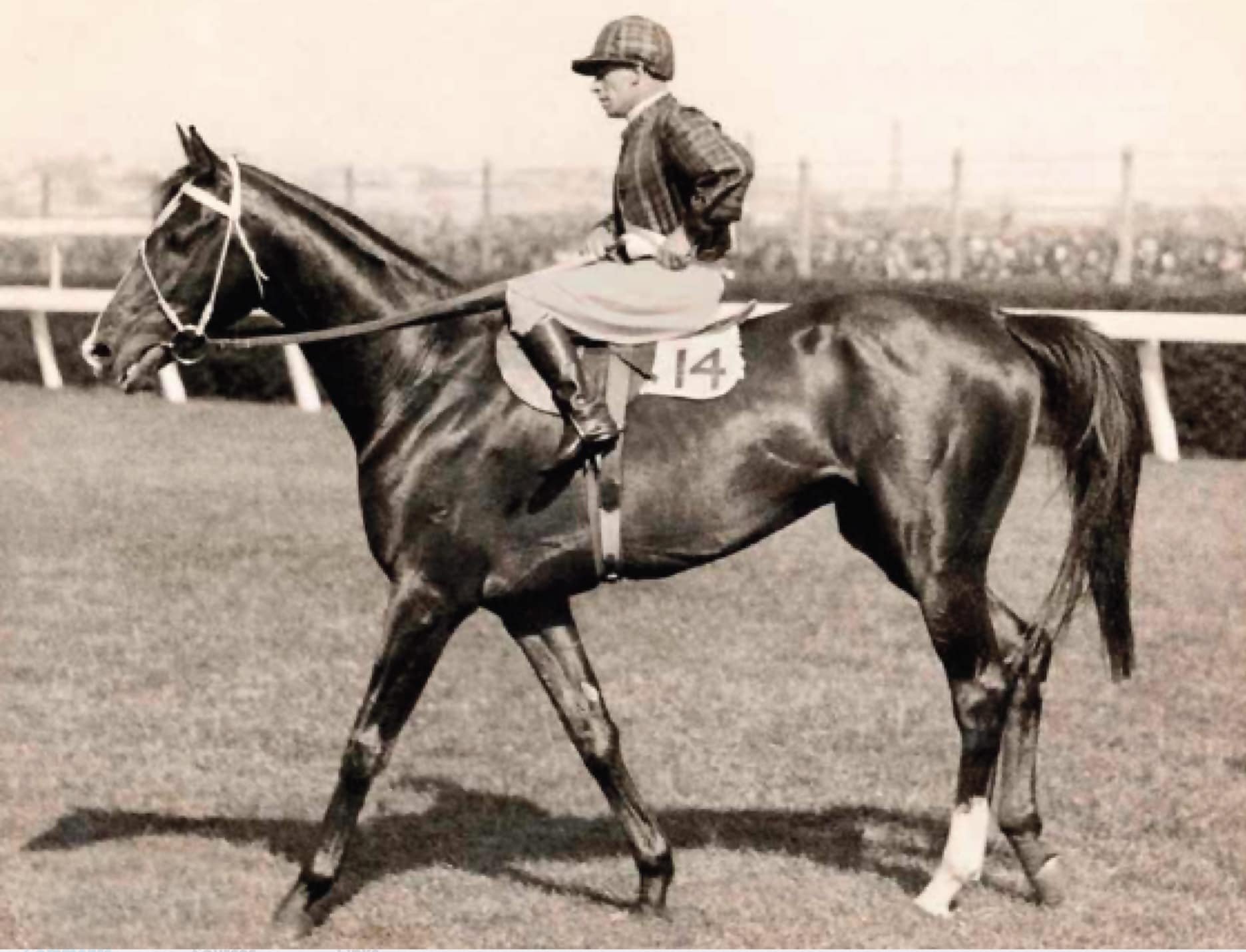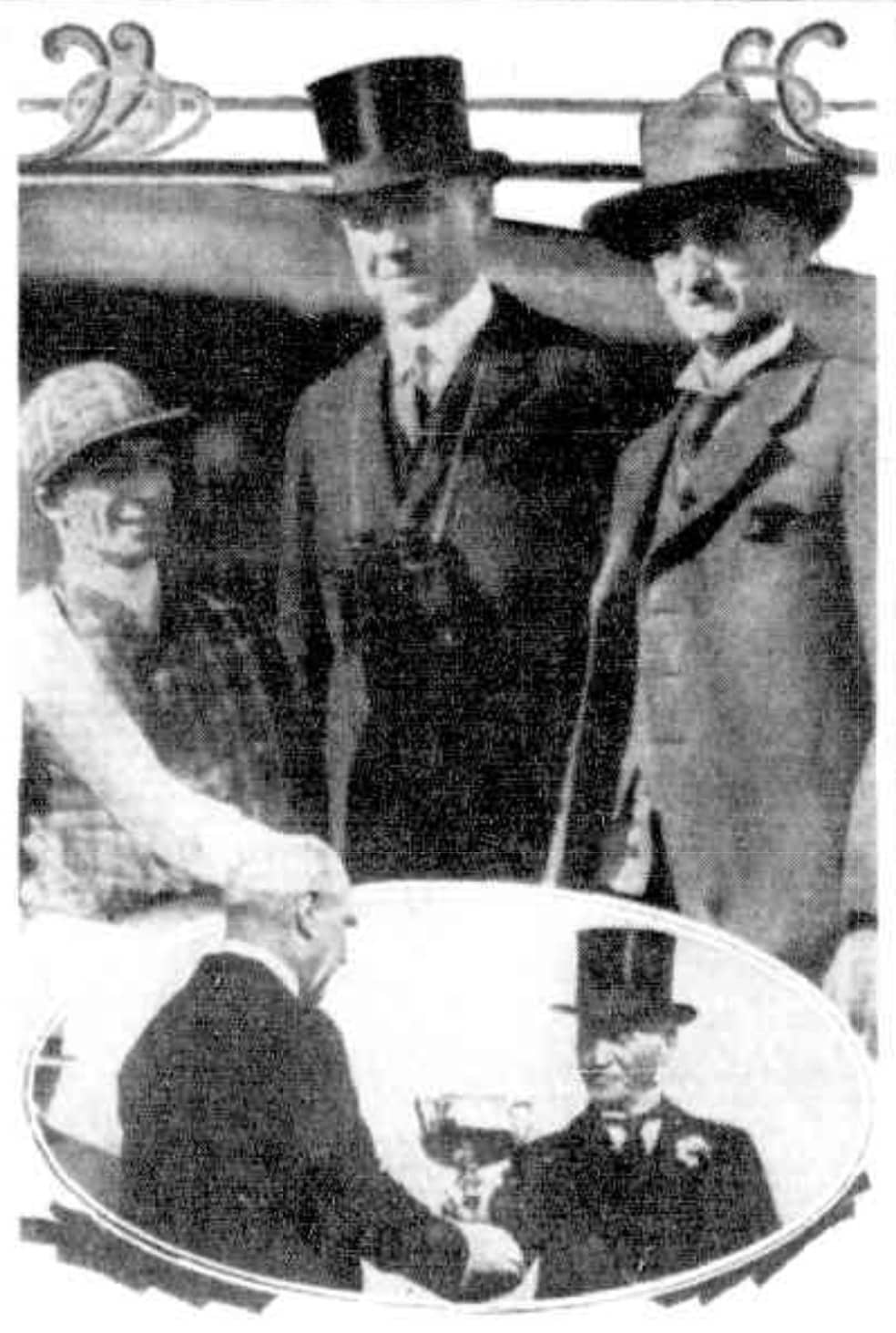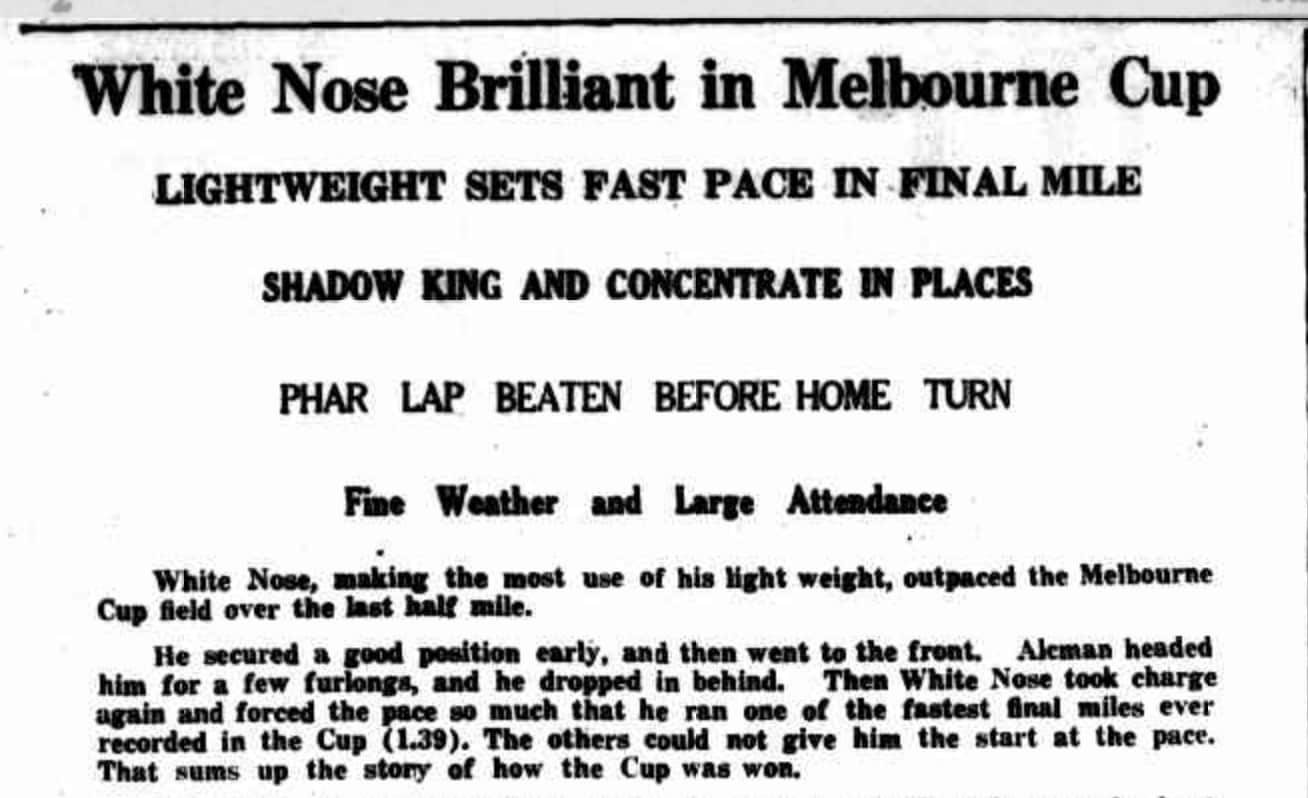THE MELBOURNE Cup will stop the nation on Tuesday, so we sought out AFL chief executive officer Gillon McLachlan to share his family link with Australia's greatest horse race.
The League CEO's great-grandfather Hugh Patterson 'HP' McLachlan was the owner and breeder of White Nose, which bolted into racing folklore by upstaging the legendary Phar Lap in the 1931 Melbourne Cup.
"It's a great story, and one that is a source of immense pride to the family," McLachlan, a passionate racing man himself, told AFL.com.au almost 87 years to the day since that Flemington boilover.
WATCH White Nose wins the 1931 Melbourne Cup
Just like a football premiership, there was a build-up to this turf triumph.
Gillon McLachlan's Gaelic-speaking great-great-great-grandparents migrated from the western highlands of Scotland to South Australia in the 1850s.
Eventual Melbourne Cup winner HP McLachlan had four siblings who died young, along with a younger brother Alexander who became a prominent politician and was chairman of the South Australian Football League from 1920-25.
HP followed in his father's footsteps by becoming a grazier, and a successful one at that on his property near Yunta, about 300kms north of Adelaide.
"My great-grandfather, HP, was a pretty hard man," the AFL boss said.
"He made a go of dry, tough country in the middle of nowhere in South Australia where it mightn't rain for three years, and where others hadn't been able to make a go of it.
"To do that, you have to be hard and make tough decisions."
White Nose upstaged wonder horse Phar Lap to win the 1931 Melbourne Cup. 
It seems HP McLachlan took a similar approach to his equine career.
He bred Paratoo (named after his sheep station), which he mated with Telleramana, a well-bred English mare he'd bought as a yearling, to produce White Nose.
Paratoo, a descendant of the great Carbine, was also a good racehorse, finishing fourth, fifth and seventh in the Melbourne Cup.
White Nose inherited his sire's lack of size, and his owner tried to sell him at the yearling sales but didn't receive a single bid.
Though serviceable, White Nose won just two of his first 36 races – with a three-year gap between wins – before taking Melbourne by storm in the spring of 1931.
Almost eight months earlier, the diminutive frontrunner had finished second in the 3620m Australian Cup, prompting old HP to have "visions of success in the Melbourne Cup".
Prepared especially for the Cup, the five-year-old won two races at Flemington in the space of just three days – easily claiming the 2400m Hotham Handicap on the Saturday, followed by the 3200m Melbourne Cup on the Tuesday. He was just the second horse to win that double in the same year.
The 8/1 equal-fourth favourite, White Nose led for most of the journey and won by two lengths.
Inconceivably, Phar Lap finished eighth. (It was the great gelding's last race in Australia before racing in North America, where he died just five months later.)
Top – Owner HP McLachlan (centre) with jockey Neville Percival and trainer EJ Hatwell. Bottom – HP McLachlan being presented with the Melbourne Cup by the Governor General, Sir Isaac Isaacs
Gillon McLachlan readily acknowledges White Nose's claim to fame as 'the horse that beat Phar Lap' needs a qualification.
The seemingly invincible Phar Lap – which had won the previous Melbourne Cup and each of his previous eight races – had been virtually weighted out of it, forced to carry an extraordinary 68kg, 23.5kg more than White Nose.
This was during the Great Depression when Phar Lap was the people's champion and a great lifter of spirits.
Not surprisingly, the focus of most newspaper headlines post-race, even in HP McLachlan's native South Australia, wasn't White Nose's victory but Phar Lap's defeat. And so a defining moment for the McLachlans became a major disappointment for the nation.
An excerpt from The Examiner at the time reporting the great upset
"It was an amazing achievement," Gillon McLachlan said.
"Firstly because my great-grandfather bought the mare (Telleramana) and bred both the sire (Paratoo) and White Nose on the farm. So it was the result of a lot of work and thought.
"For someone in your family to have bred and owned a Melbourne Cup winner is significant, but to have beaten Phar Lap in that period is really special.
"Everyone knows it wasn't because White Nose was better; it was because Phar Lap was basically carrying the grandstand. But that doesn't diminish the story – it adds to it."
"The colours are the colours you will have seen on a horse called White Nose in 1931 when it beat Phar Lap to win the Melbourne Cup." @AFL boss Gillon McLachlan talks about his involvement in racehorse ownership and breeding. #FreeRein: https://t.co/CE1vnLmtV2 pic.twitter.com/v3icPxdUhB
— Racing.com (@Racing) March 20, 2018
HP McLachlan died suddenly in his Glenelg home seven years later on June 29, 1939, aged about 70.
The 1931 Melbourne Cup trophy was later shared among the families of his three sons, and Gillon McLachlan recalled it making regular appearances on special occasions.
"On Christmas Day the cup would be sitting in the middle of the table," he said.
The AFL boss breeds racehorses as a hobby and has been involved in many horse racing syndicates.
Some years ago he re-registered the silks worn by his great-grandfather's jockeys, comprising the McLachlan tartan with a white sash.
"It's a real thrill when you win with a horse you've bred, and you do it in the colours your great-grandfather used. It has a bit of meaning," he said.


